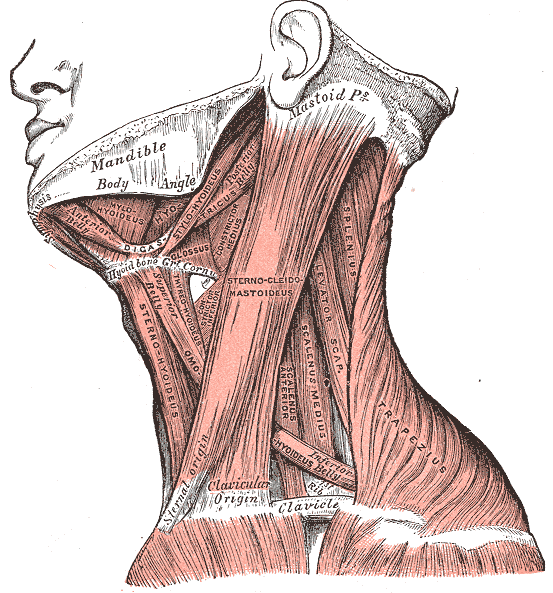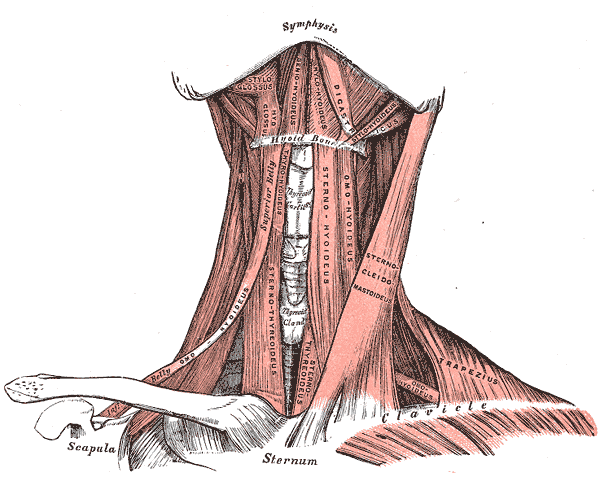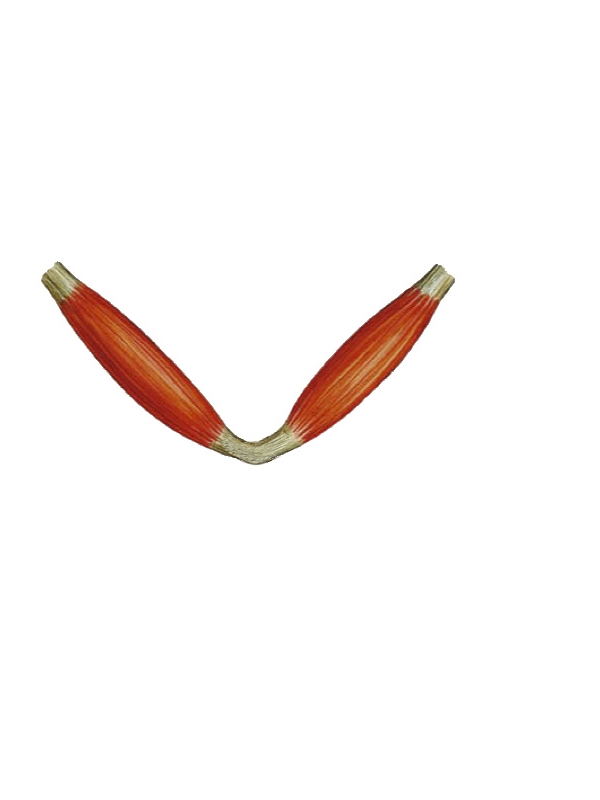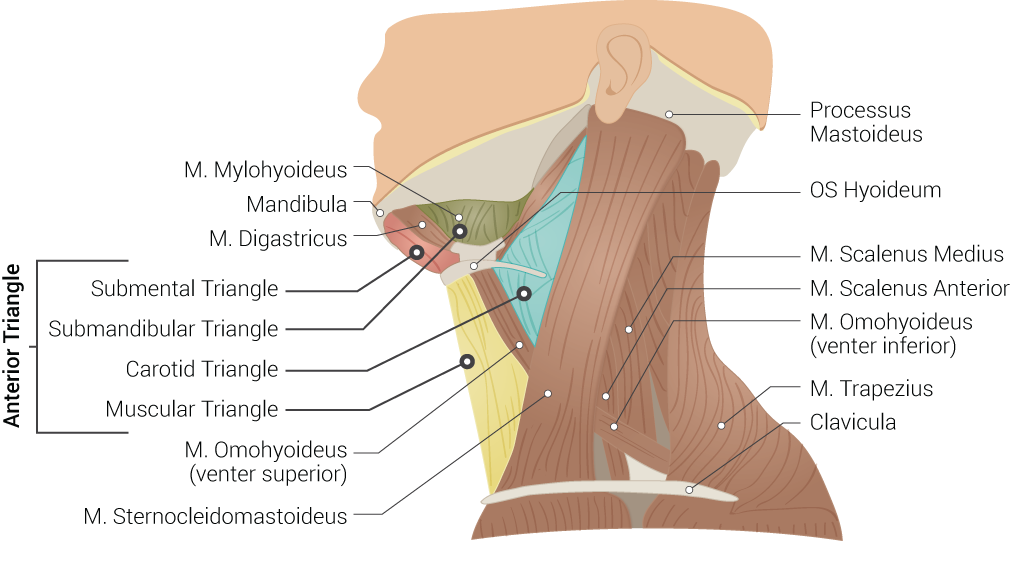[1]
Bhat NP, Sumalatha S, Shetty A, Prabhath S. A clinical perspective on the anatomical study of digastric muscle. Anatomy & cell biology. 2023 Dec 31:56(4):441-447. doi: 10.5115/acb.23.043. Epub 2023 Oct 6
[PubMed PMID: 37798015]
Level 3 (low-level) evidence
[2]
Hsiao TH, Chang HP. Anatomical variations in the digastric muscle. The Kaohsiung journal of medical sciences. 2019 Feb:35(2):83-86. doi: 10.1002/kjm2.12012. Epub
[PubMed PMID: 30848024]
[3]
Singh M, Vashistha A, Chaudhary M, Kaur G. Forgotten triangles of neck. Annals of maxillofacial surgery. 2016 Jan-Jun:6(1):91-3. doi: 10.4103/2231-0746.186149. Epub
[PubMed PMID: 27563614]
[4]
Meegalla N, Sood G, Nessel TA, Downs BW. Anatomy, Head and Neck: Facial Arteries. StatPearls. 2023 Jan:():
[PubMed PMID: 30725617]
[5]
Sowman PF, Flavel SC, McShane CL, Sakuma S, Miles TS, Nordstrom MA. Asymmetric activation of motor cortex controlling human anterior digastric muscles during speech and target-directed jaw movements. Journal of neurophysiology. 2009 Jul:102(1):159-66. doi: 10.1152/jn.90894.2008. Epub 2009 May 6
[PubMed PMID: 19420123]
[6]
Kim SD, Loukas M. Anatomy and variations of digastric muscle. Anatomy & cell biology. 2019 Mar:52(1):1-11. doi: 10.5115/acb.2019.52.1.1. Epub 2019 Mar 29
[PubMed PMID: 30984445]
[7]
Choi P, Iwanaga J, Dupont G, Oskouian RJ, Tubbs RS. Clinical anatomy of the nerve to the mylohyoid. Anatomy & cell biology. 2019 Mar:52(1):12-16. doi: 10.5115/acb.2019.52.1.12. Epub 2019 Mar 29
[PubMed PMID: 30984446]
[8]
Kawai K, Koizumi M, Honma S, Tokiyoshi A, Kodama K. Derivation of the anterior belly of the digastric muscle receiving twigs from the mylohyoid and facial nerves. Annals of anatomy = Anatomischer Anzeiger : official organ of the Anatomische Gesellschaft. 2003 Jan:185(1):85-90
[PubMed PMID: 12597132]
[9]
Ohkoshi A, Ogawa T, Sagai S, Nakanome A, Higashi K, Ishii R, Kato K, Katori Y. Simple laryngeal suspension procedure by suturing the digastric muscle to the periosteum of the mandible in neck dissection for tongue cancer. American journal of otolaryngology. 2018 Mar-Apr:39(2):77-81. doi: 10.1016/j.amjoto.2018.01.008. Epub 2018 Jan 31
[PubMed PMID: 29395281]
[10]
Gawryszuk A, Bijl HP, Holwerda M, Halmos GB, Wedman J, Witjes MJH, van der Vliet AM, Dorgelo B, Langendijk JA. Functional Swallowing Units (FSUs) as organs-at-risk for radiotherapy. PART 1: Physiology and anatomy. Radiotherapy and oncology : journal of the European Society for Therapeutic Radiology and Oncology. 2019 Jan:130():62-67. doi: 10.1016/j.radonc.2018.10.028. Epub 2018 Nov 9
[PubMed PMID: 30420235]
[11]
Kim J, Shin ES, Kim JE, Yoon SP, Kim YS. Neck muscle atrophy and soft-tissue fibrosis after neck dissection and postoperative radiotherapy for oral cancer. Radiation oncology journal. 2015 Dec:33(4):344-9. doi: 10.3857/roj.2015.33.4.344. Epub 2015 Dec 30
[PubMed PMID: 26756035]
[12]
Shen SC, Nachalon Y, Randall DR, Nativ-Zeltzer N, Belafsky PC. High elevation training mask as a respiratory muscle strength training tool for dysphagia. Acta oto-laryngologica. 2019 Jun:139(6):536-540. doi: 10.1080/00016489.2019.1605196. Epub 2019 Apr 29
[PubMed PMID: 31035838]
[13]
Wada S, Tohara H, Iida T, Inoue M, Sato M, Ueda K. Jaw-opening exercise for insufficient opening of upper esophageal sphincter. Archives of physical medicine and rehabilitation. 2012 Nov:93(11):1995-9. doi: 10.1016/j.apmr.2012.04.025. Epub 2012 May 10
[PubMed PMID: 22579648]
[14]
Clement WA, Graham I, Ablett M, Rawlings D, Dempster JH. Intramuscular hemangioma of the posterior belly of the digastric muscle failing to highlight on magnetic resonance imaging. The Annals of otology, rhinology, and laryngology. 2002 Nov:111(11):1050-3
[PubMed PMID: 12450183]




